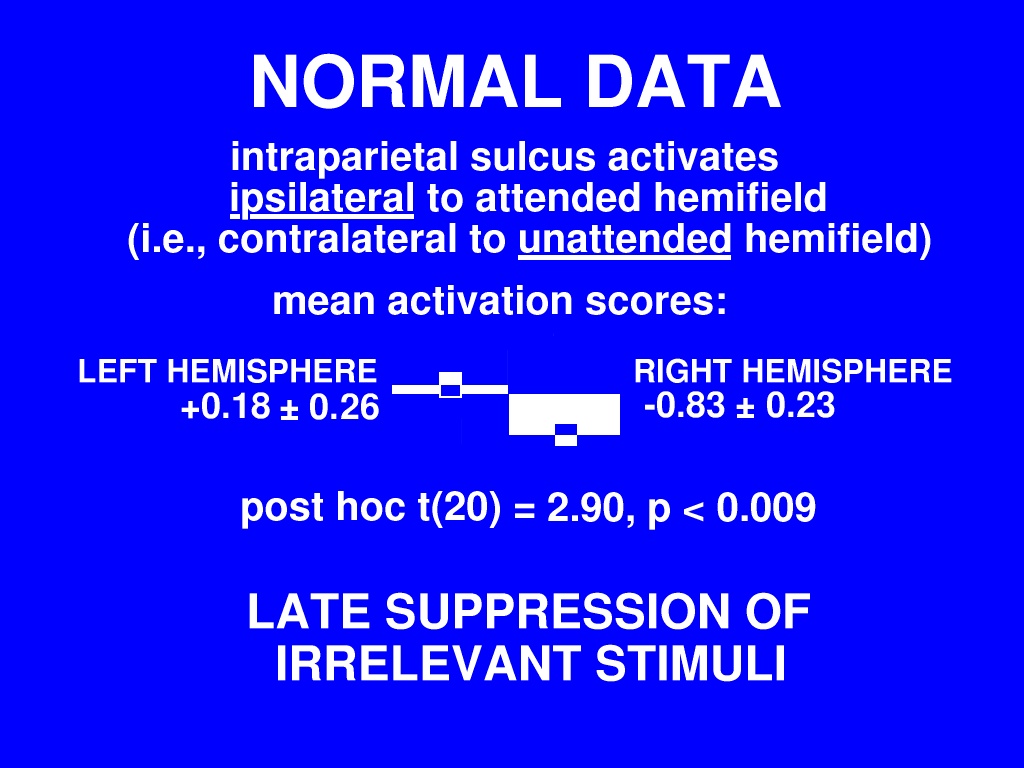

In line with a couple of recent studies which have found that intraparietal sulcus activity varies as a function of the irrelevant information in the stimulus, we suggest that intraparietal sulcus is involved in active suppression of irrelevant stimuli.
In this type of experiment, in which subjects are constantly anticipating another shift and attention therefore may not settle fully on one hemifield or the other, early attentional selection and late attentional suppression may act in complementary roles: any input from the unattended field that manages to squeak through the early attentional gate would be actively suppressed at this later stage.
![[previous]](../left_arrow.gif) |
![[contents]](../up_arrow.gif) |
![[next]](../right_arrow.gif) |